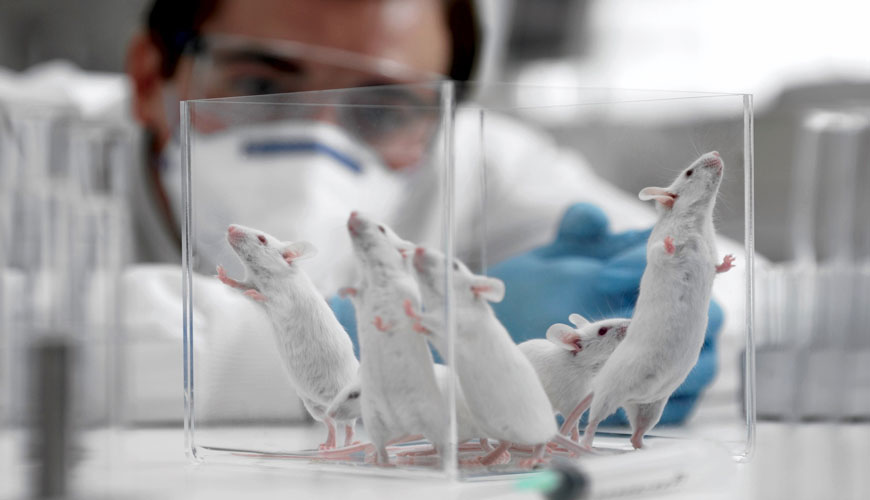

EUROLAB, with its state-of-the-art accredited laboratories and expert team, provides precise and fast testing services within the scope of OECD TG 488 testing. This standard can detect chemicals that induce point mutations and minor deletions (as opposed to major chromosomal damage/loss) in somatic and germ cells in vivo.

TGR mutation models contain transgenic reporter genes carried on vectors designed to be readily recovered from any tissue in the body. Mutations arising in a rodent are measured by recovering and analyzing the phenotype of the reporter gene in a bacterial host deficient for the reporter gene.
Transgenic mouse and rat gene mutation detection models are currently available. Both mouse and rat models are considered equally acceptable.
The rationale for the model used in TG testing should include the following:
All procedures must comply with local laboratory animal care standards. For rodents, the temperature in the experimental animal room should ideally be 22oC (±3oC). Except for room cleaning, the relative humidity should not exceed at least 30% and preferably 70%, but the aim should be 50-60%. Lighting should be artificial, with 12 hours of light per day followed by 12 hours of darkness. For nutrition, traditional laboratory diets with an unlimited supply of drinking water can be used.
Dietary choice may be influenced by the need to provide an appropriate mix of a test chemical when administered in this way. Rodents should be housed in small groups (usually no more than five) of the same sex, preferably in suitable environmentally enriched solid ground cages if no aggressive behavior is expected. Cages should be randomly arranged to minimize potential effects from cage placement.
To establish sufficient experience with the conduct of the test prior to use for routine testing, the laboratory should demonstrate the ability to reproduce the results expected from published data (3) (23) for both mutant frequencies and transgene recovery from genomic DNA.
When collecting initial data for a historical negative control distribution, concurrent negative controls should be consistent with published data where they are located. As more experimental data is added to the historical control distribution, concurrent negative controls should ideally be within the control limits of 95% of the distribution.
EUROLAB assists manufacturers with OECD TG 488 test compliance. Our test experts, with their professional working mission and principles, provide you, our manufacturers and suppliers, the best service and controlled testing process in our laboratories. Thanks to these services, businesses receive more effective, high-performance and quality testing services and provide safe, fast and uninterrupted service to their customers.
To get an appointment, to get more detailed information or to request an evaluation, you can ask us to fill in our form and reach you.